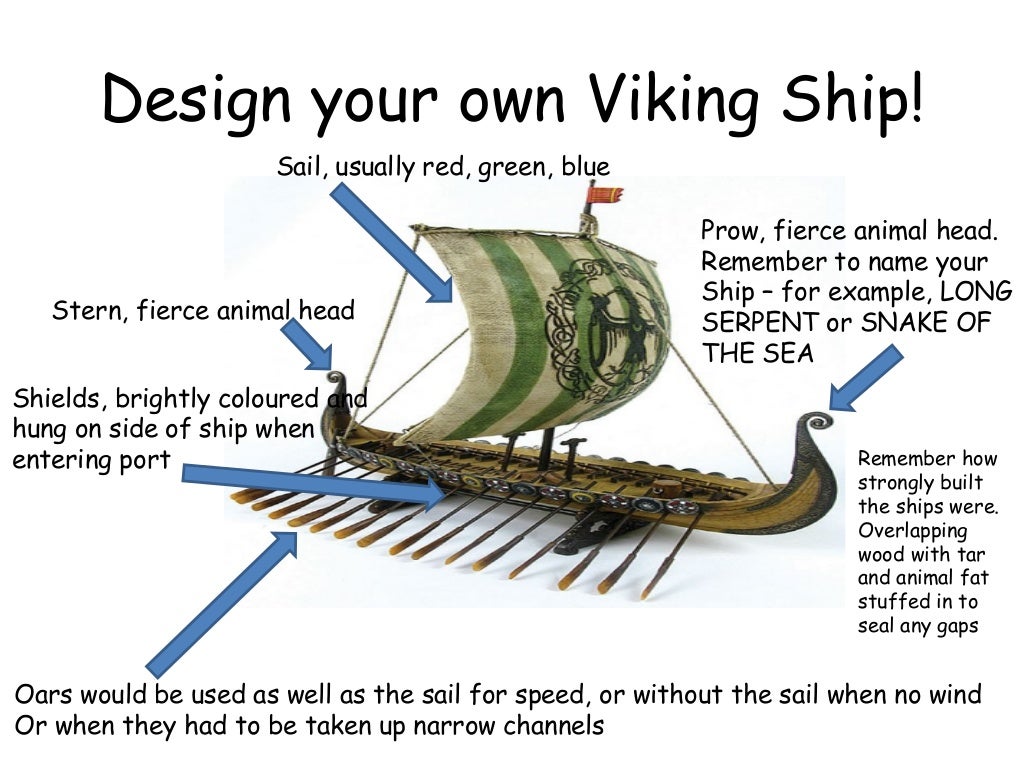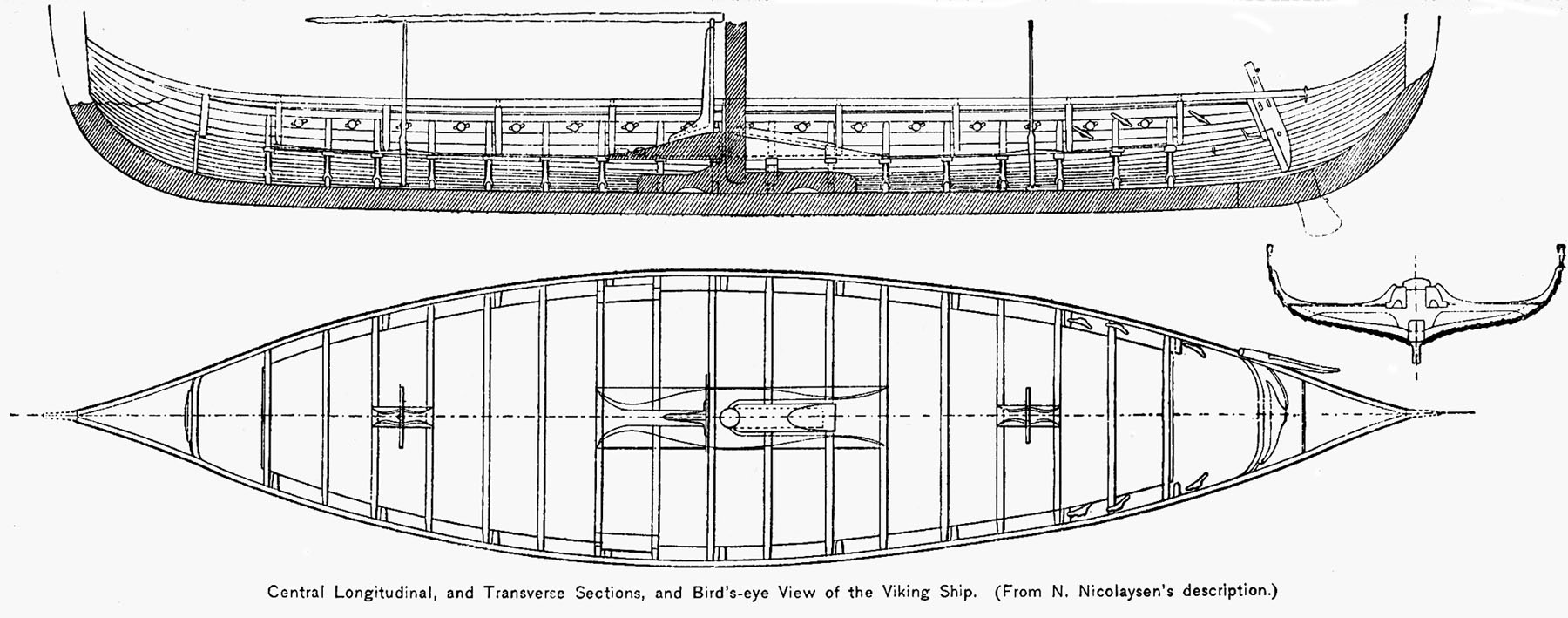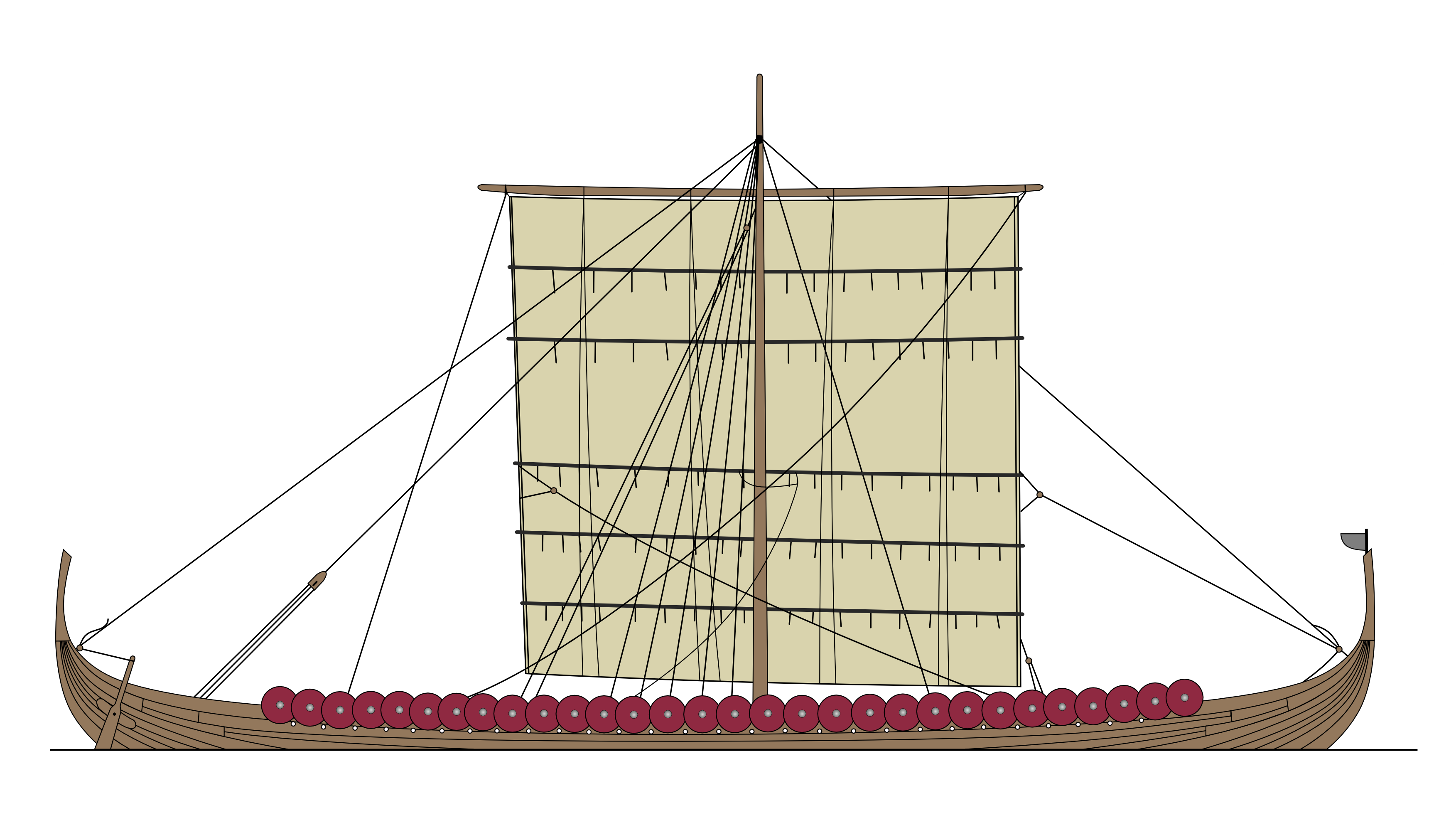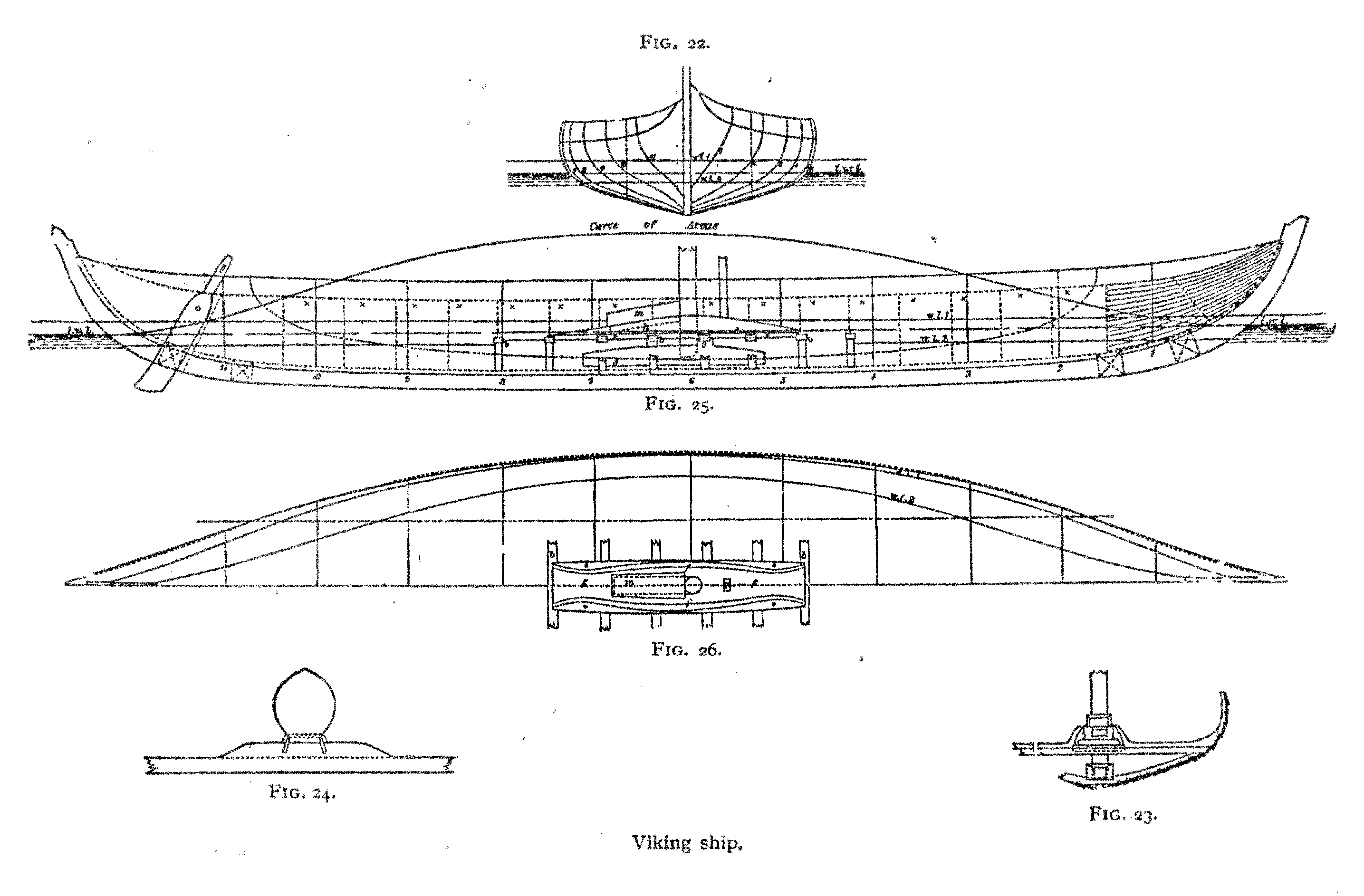
Viking longships
Features of a Viking Ship The Hull of Havhingsten (c) TBirkett. CC BY NC Clinker Construction One of the defining features of Viking ships are their clinker-built construction, with overlapping side planks (or strakes) fixed together with iron clinker nails.

Viking ship plans. Viking ship
One person. It's this. exciting, vivid depiction of a dragon or sea serpents twisting together, biting tails. The scales on the skin are picked out with these carefully etched lines. And while.

Amazing 10 Vikings Long Ship Facts Learning Mole
The contruction of the ship. Viking Age ships were both light and strong. There are two main reasons for this: The planks and frames were cleaved and followed the tree's fibres. This made the finished pieces very strong, even though their dimensions were reduced due to a desire to keep the overall weight of the ship down.

Viking ship construction. Illustration by Angus McBride. Viking ship
Indeed, the Viking Age, from A.D. 800-1100, was the age of the sleek, speedy longship. Without this crucial advance in ship technology, the Vikings would never have become a dominant force in.

Image result for viking ship diagram Viking ship, Vikings, Viking history
Parts of a Longship Viking longships were made up of several parts, including: Oars: Longships had between 24 and 50 oars, depending on their size. They could be pulled inside through the oar-port in shallow waters. Sail: Each ship had a big, brightly coloured square sail which was woven from wool.

Le navi vichinghe VitAntica Viking longship, Viking ship, Longship
All you need to know about Viking ships Jonathan Williamson 1 year ago If you lived in the early medieval period, nothing would induce fear more than sighting a Viking ship heading your way. The Gokstad ship, a Viking ship from the 9th century found in a burial mound at Gokstad and exhibited at the (temporarily closed) Vikingskipsmuseet in Oslo.

Constructing a longship How It Works Magazine
The Ship's Crew. The Norwegian Gulating law From the 1100 - 1200 is the most in depth text about organisation and hierarchy on board the long ships in the Viking Age. It includes several passages about the building process, manning the fleet, rules for the skipper, steersman and cook and war equipment. Fra museets mange forsøgsrejser ved vi.

Gokstad Viking Longship The Model Shipwright
Quick Facts: The Viking ship was a strong durable ship that allowed the Norsemen of Scandinavia sail long distances and raid far away kingdoms. Date: 700-1100AD Floki Vilgerdarsson Floki Vilgerdarsson Viking ship { {PD-Art}} Overview Gallery Additional Resources Viking ships were very versatile.

Vikings of Bjornstad Viking Ship Terms Viking ship, Viking longship
The ships were powered by oars or by the wind, and had one large, square sail, most probably made from wool. Leather strips criss-crossed the wool to keep its shape when it was wet. Viking ships also had oars. A steering oar or 'steerboard' was used to steer the ships. It was fastened to the right-hand side of the ship at the stern (back).

Gokstad Viking Longship The Model Shipwright
The Viking ship is iconic for its unique style, allowing it to both sail across the treacherous seas of Northern Europe, and row up the narrow rivers and tributaries in the lands of their victims. But Viking ships were not all the same. In fact, they varied quite a lot in style, design, and function.

Gokstad Viking Longship The Model Shipwright
The Viking ships' square sail was, in size and shape, developed together with the individual hull size and type of ship. The central crucial factor is the elementary balance between hull, sail and rudder when sailing against the wind, i.e. sailing close-hauled. If the sail is too broad relative to the hull and the shape of the hull, the ship.

Viking Longship Display Viking longship, Vikings for kids, Vikings
All Viking ships are clinker built; the planks were overlapped at one edge and riveted together. In clinker shipbuilding you start build the outside first, and then put a frame inside it. The other style of wooden shipbuilding, used by the Mary Rose and the Victory, is called carvel.

Viking Boat Layout. More Viking Power, Viking Life, Viking Warrior
the upper edge of the side of a boat. oarports. the holes on the side of the ship that hold the oars. figurehead. a carved figure on the front (bow) of a boat. rigging. the ropes used to support and work the masts, yards, sails, etc., on a ship. Study with Quizlet and memorize flashcards containing terms like mast, keel, strake and more.

Parts of a Viking Ship Diagram Quizlet
Viking ship A modern replica of a Viking ship. This ship is of the snekkja longship type. Viking ships were marine vessels of unique structure, used in Scandinavia from the Viking Age throughout the Middle Ages.

Pin by Erika W Lähde on Ancient Ships Warship, Boat, Viking ship
The Vikings had several types of ships: warships, merchant ships, everyday ships, etc. All the boats carried sails and most of them could also be rowed, but this did not apply to the heavy merchant ships.

Pin by Pavel Shipilin on Судостроение викингов Viking ship, Viking
Gokstad Viking Ship Karamell (CC BY-SA) Viking Ships were built by the Scandinavians during the Viking Age (c. 790 CE - c. 1100 CE) and were used both within Scandinavia and beyond for purposes ranging from being the most important means of transport to trade and warfare. Viking expansion, moreover, would not have been possible without ships.